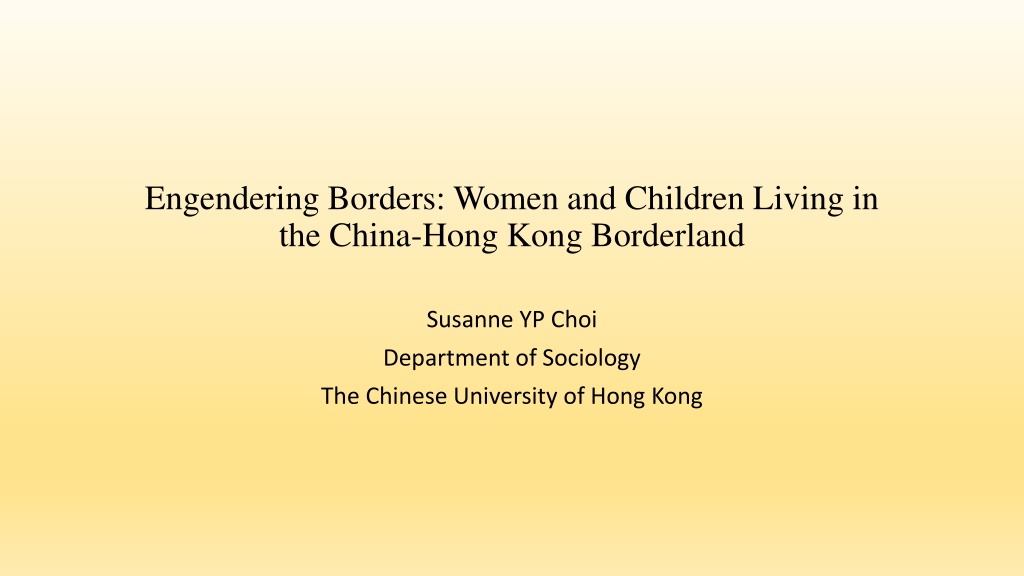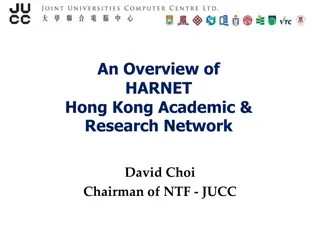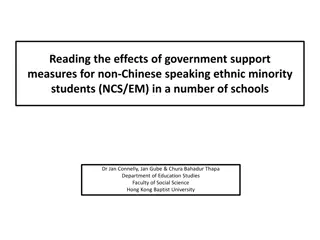Gender Dynamics in the China-Hong Kong Borderlands
Exploring the intricate interplay between women, children, and borderland dynamics in the China-Hong Kong region, this study delves into the unequal societal positioning experienced by individuals due to gendered migration patterns. It examines how anti-migration sentiments shape symbolic boundaries and influence migration regimes that impact men and women differently. By adopting a relational and multi-level approach, the research sheds light on the complexities of borderland interactions and their implications for individuals' lived experiences.
Download Presentation

Please find below an Image/Link to download the presentation.
The content on the website is provided AS IS for your information and personal use only. It may not be sold, licensed, or shared on other websites without obtaining consent from the author. Download presentation by click this link. If you encounter any issues during the download, it is possible that the publisher has removed the file from their server.
E N D
Presentation Transcript
Engendering Borders: Women and Children Living in the China-Hong Kong Borderland Susanne YP Choi Department of Sociology The Chinese University of Hong Kong
Border-crossing, border politics, and borderlands Globalization and the Permeability of Physical Borders The Emergence of Borderlands as Sites of Adventure and Possibility Vision of a Borderless World and the Continued Salience of Nation State Anti-migration and the reassertion of symbolic boundaries
Engendering Borders Borderland as a site of adventure and possibilities has been differentially appropriated by men and women due to their unequal positioning in the social structure and the gendered patterns of migration and mobility The rise of anti-migration and the construction of symbolic boundaries of communal belonging has prompted the development of migration regimes that differentially constrain men and women who cross borders and strive to build a life in and around borderlands. The Emergence of borderland as key sites of mobility and hybridity has different implications for the life worlds of men and women, as they enter these sites to enact gender specific social roles, and with unequal resources and goals.
Engendering Borders: A Relational and Multi- level Approach Borders are relational They are simultaneously the points of division and convergence between two geopolitical entities. Borderland research thus needs to understand its implications for the life world of individuals as they unfold in the context of interactions, e.g. between different groups within the borderland, and between groups on both sides of the border etc. These interactions occur at the material and symbolic levels, prompting the need to investigate the relationship between physical borders and symbolic boundaries.
Method and Data The data for this study were collected between 2013 and 2016 in the borderland between Mainland China and Hong Kong. In total we interviewed 50 women in Shenzhen, a special economic zone located immediately north of Hong Kong, and 10 Hong Kong men who have married a Mainland Chinese wife, and 5 staff working in non-governmental organizations (NGOs) providing services to cross-border families in Hong Kong. The interviews were all on an one-to-one basis and taped recorded. Full verbatim transcripts were prepared. These data were then coded and analyzed for emerging themes.
Hong Kong: From A British Colony to a Special Administrative Region of China
The Borderland A Site of Gendered and Classed Interactions
Shenzhen- Home for Second-Wives of Hong Kong men The emergence of the second wife phenomenon between Hong Kong men sojourning in Shenzhen and female rural-to- urban migrant workers seeking a better life in the newly established special economic zone reflects gender and class inequalities between rural and urban residents of modernizing China, and inequalities between residents on the two sides of the border.
Shenzhen Shenzhen - - Home for Migrants in HK Migrants in HK- -China Home for Female Marriage Female Marriage China Cross Cross- -Border Marriages Border Marriages In 1986 15,776 registered cross-border marriages involved a Hong Kong man and a Mainland Chinese woman. The number of such marriages increased rapidly, reaching a peak of 28,145 in 2006. In 2013, almost 40% of all marriages registered in Hong Kong involved a Hong Kong man marrying a Mainland Chinese woman (Hong Kong Census and Statistics Department, 2014).
Shenzhen - Home for Female Marriage Migrants in HK-China Cross-Border Marriages A considerable number of these Mainland Chinese wives of Hong Kong men reside in Shenzhen for certain period of time after their marriage. If wealthy Hong Kong men take in second wives in the borderland because they have the resources to support a second family, working class Hong Kong men find wives in Mainland China and set up families in the borderland because their socioeconomic disadvantages have squeezed them out of the local marriage market and precluded them from setting up a family in a city renowned for excessively high housing prices and expensive living costs.
Shenzhen - Home for Female Marriage Migrants in HK-China Cross-Border Marriages Delayed Citizenship One-way permit Waithood and Border Lives Social Reproduction Across Borders
Border Lives: Double Connection or Double Marginalization? Neither the Hong Kong government nor the Mainland Chinese government help us. We are literally marginalized people We are marginalized not only in Hong Kong but also on the Mainland [Because I still live in south China] I don t get the welfare benefits to which a resident of Hong Kong is entitled. Hong Kong people think that I am a Mainlander because my family resides in south China. But Mainlanders don t treat me as a Mainlander either, because I have obtained Hong Kong residency [and have given up my household registration (Hukou) in China, a necessary consequence of obtaining HK residency]. Instead, they think that I have come back to the Mainland to take their resources. If we wanted to purchase a house in China, we would have to pay heavier taxes than a couple with a Mainland household registration and go through a lot of procedures and restrictions because legally we are not citizens of Mainland China . (Mrs. Xia, aged 40, married with a child, obtained Hong Kong residency but remained in Shenzhen)
Shenzhen - Home for Female Marriage Migrants in HK-China Cross-Border Marriages A temporary solution becomes a long-term condition due to personal preference for a familiar lifestyle, or because female marriage migrants use the borderland as a way to escape social marginalization and discrimination migrants often encounter in Hong Kong.
Intensified Contest over Identity The Rise of Localism The emergence of a small but visible pro- independence movement Anti-migration politics
Frequent Cross-Border Children and Cultural Membership
Borderland and Forced Entrapment Second Wives of Hong Kong Men Relational Precarity Legal Precarity Forced Entrapment in the borderland
Gender and Border Lives Structural Constraints and Intersectional Inequalities Existential Precarity Strategies and Agency























